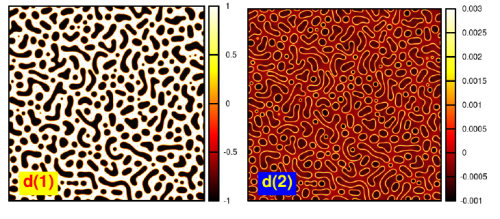
Gyula Tóth1, Bjørn Kvamme2
1Department of Mathematical Sciences, Loughborough University, Loughborough, Leicestershire, LE11 3TU, U.K.
2Institute of Physics and Technology, University of Bergen, Allégaten 55, N-5007 Bergen, Norway
In this paper diffuse interface models of surfactant-assisted liquid-liquid phase separation are addressed. We start from the generalized version of the Ginzburg-Landau free-energy-functional-based model of van der Sman and van der Graaf. First, we analyze the model in the constant surfactant approximation and show the presence of a critical point at which the interfacial tension vanishes. Then we determine the adsorption isotherms and investigate the validity range of previous results. As a key point of the work, we propose a new model of the van der Sman/van der Graaf type designed for avoiding both unwanted unphysical effects and numerical difficulties present in previous models. In order to make the model suitable for describing real systems, we determine the interfacial tension analytically more precisely and analyze it over the entire accessible surfactant load range. Emerging formulas are then validated by calculating the interfacial tension from the numerical solution of the Euler-Lagrange equations. Time-dependent simulations are also performed to illustrate the slowdown of the phase separation near the critical point and to prove that the dynamics of the phase separation is driven by the interfacial tension.


